Dating from the turn of the 20th century through to the 1980’s.
These watches vary greatly in design and style ranging from small refined dress watches to chunkier sports watches but all have in common their recognition as classic watches for one reason or another.
1910’s
Cartier Tank

1919.
The Renault tanks which Louis Cartier saw on the Western front inspired him to create this classic watch.
Its rectangular lines and proportions mimic those of the tanks of the WWI battlefields.
It was the first watch designed as a piece of jewellery with style and comfort in mind and the inspiration for the modern wristwatch as we know it.
Earlier in 1911 Cartier released their first wristwatch, the Santos, created for Cartier’s friend and aviation pioneer Alberto Santos-Dumont who requested a watch that could be used during flights and complained of the unreliability of pocket watches in flight.
[/box]
1930’s
Jaeger-LeCoultre Reverso

1931. The Reverso is a watch with a unique swivel case devised to protect the watch face.
Cesar De Trey, while relaxing in a bar after a polo match happened to notice the smashed crystal on a watch worn by one of the other players, this led him to suggest the idea of a reversible watch to his friend Jacques-David LeCoultre and so the Reverso came about.
The watch can be slid sideways and reversed so that the watch faces inwards- and the metal back outwards protecting the watches crystal. Variations of this design have been introduced over the years, including double faced versions but the design of this classic watch remains essentially the same in its modern form.
Here you can read more on the history of the Jaeger LeCoultre Reverso
Panerai Radiomir

1938. Panerai, originally instrument makers were asked by the Italian Navy to design a watch that was water tight for its elite unit and the Radomir was the result .
Having a large cushion shaped case of 47mm with a screw down crown and a hand wound movement supplied by Rolex. A notable model is the Radiomir 8 Days which has an 8 day power reserve.
1940’s
Movado Museum
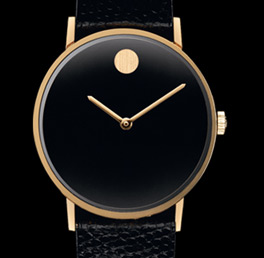
1947. The first wristwatch to be displayed at the Museum of Modern Art.
The Movado Museum was designed by Nathan Horwitz and manufactured by Vacheron & Constantin-Le Coultre.
A very minimalistic design for its day, with no numerals and a black face defined by a single gold dot symbolizing the sun at high noon. An enduring piece of design it has stood the test of time well and still looks modern today.
It was added to the Museum of Modern Art’s permanent collection in 1960.
1950’s
Rolex Submariner

1953. The Submariner features probably the most recognizable bezel/dial combination in the world of dive watches.
This no doubt helped by Rolex’s brilliant marketing strategy, starting when they virtually invented the sports watch in 1927 and had Mercedes Gleitze the first woman to swim the English Channel carry a Rolex tied around her neck.
And of course the Submariner appearing in eleven James Bond films has also helped make it a legendary piece of style and utility and secure its position as a classic watch.
Omega Speedmaster

1957. Aka the “moon watch”.
It was the first watch to be worn on the moon when Buzz Aldrin famously landed there in 1969. Remarkably it was the only piece of equipment that wasnt specially made for use on space misssions.
Early in the 1960’s a NASA employee anonymously bought a selection of potential space watches, these were chronographs by the most well known watch brands at that time including Longines, Rolex, Bulova, Hamilton… Of all the watches NASA tested, the Omega Speedmaster was the only one to pass.
You can read more on the history of Space Watches here
1960’s
TAG Heuer Monaco

1969.The first automatic square cased chronograph it was originally introduced by Heuer.
Steve McQueen helped cement its place as a classic watch when he wore it in the 1971 film “Le Mans”. Tag heavily promoted the Monaco using stills from the film during the years after McQueen’s death, so much so that the watch has become synonymous with him and the film.
In the mid-1970’s it was discontinued but re-introduced in 1998 with a new design and again in 2003 with new movements in response to McQueen’s increasing popularity.
Seiko Astron

1969. The world’s first quartz watch.
The Astron was launched on Christmas day 1969 and ushered in the quartz revolution.
It was the result of a competition among SEIKO’s designers, took 10 years of research to develop and represents a key historical achievement in electrical and electronic engineering. Accurate to ±5 seconds per month, or one minute per year.
1970’s
Hamilton Pulsar

1971. The first (electronic) digital watch.
This was also the first electronically powered watch to display time in a digital format as well as being the first all electronic watch.
Inspired by the futuristic digital clock that Hamilton had made for the film 2001: A Space Odyssey it was given the name “Pulsar“ after the star of the same name and had an 18-carat gold case and retailed for $2,100, about the price of the Chevrolet Vega at the time!
Synchronar

1972. World’s first solar powered watch
The first version of a solar watch was produced by inventor Roger Riehl in March 1968, a prototype followed in 1970 and a full production version called the ‘Synchronar‘ was released in 1972.
On the top of the watch where the time would usually be displayed there were instead two banks of solar cells and, rather uniquely the time is displayed on the side of the watch.
You can read more about the history of Solar watches here
1980’s
Swatch
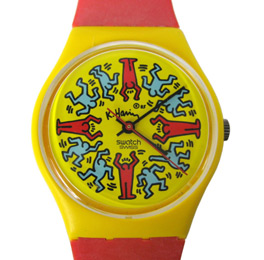
1985. The watch that saved the Swiss watch industry.
As a result of the quartz and microprocessors, cheap modern electronic watches from the Far East were taking over the watch market and ironically the Swatch an uncharacteristically Swiss watch would be responsible for the Swiss watch industry’s recovery.
Although with its dial it heralded a return to the traditional method of telling the time there was nothing traditional about the rest of it. It was a Swiss watch that was cheap and fun and spawned its own style.
Since its launch hundreds of millions have been sold in all manner of styles and colours.
Casio G-Shock

1983. The first ‘indestructable’ watch.
Famous for their toughness the G-Shock its development was guided by the “Triple Ten” principles:
10-meter free-fall endurance, 10-bar water resistance and a 10-year battery life. Over 200 experimental prototype G Shock watches were built for endurance testing.

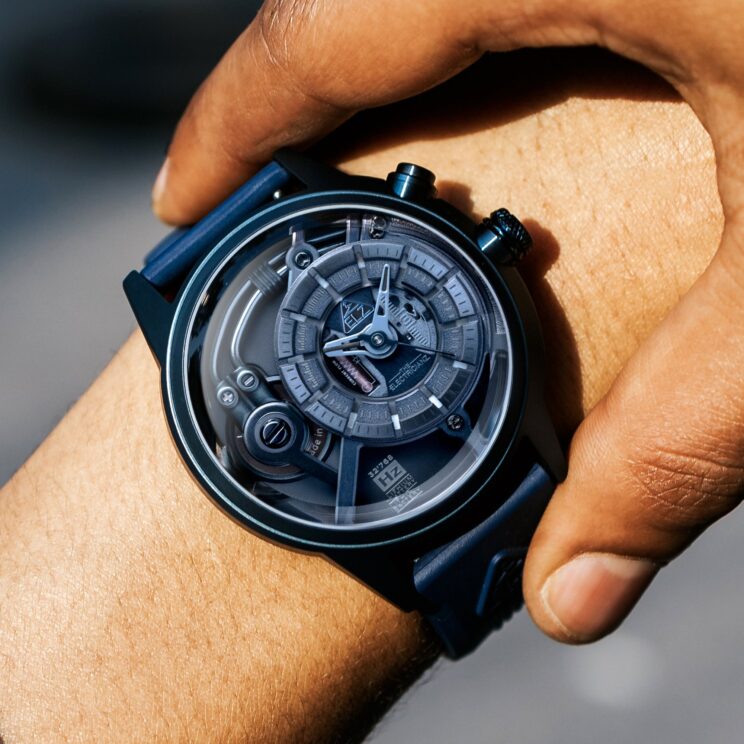
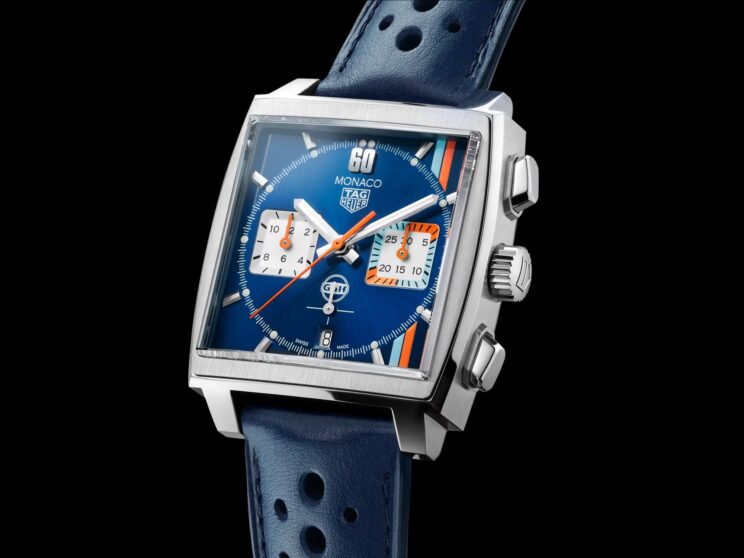
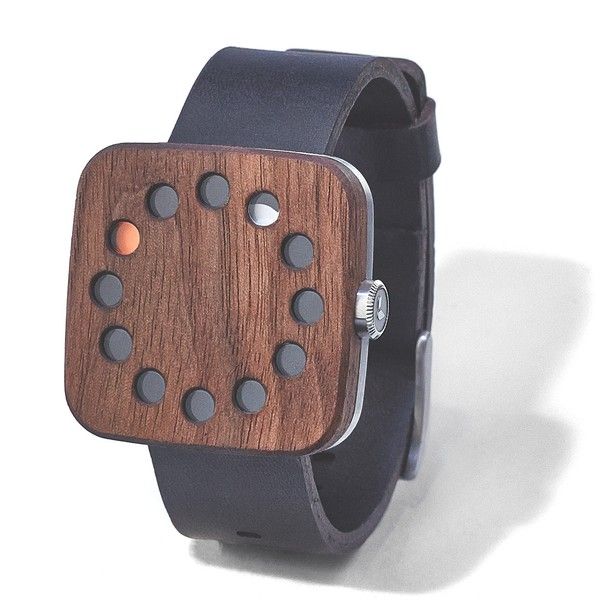
Im looking for the 1963 Seagull (anniversary 50years) Chinese watch